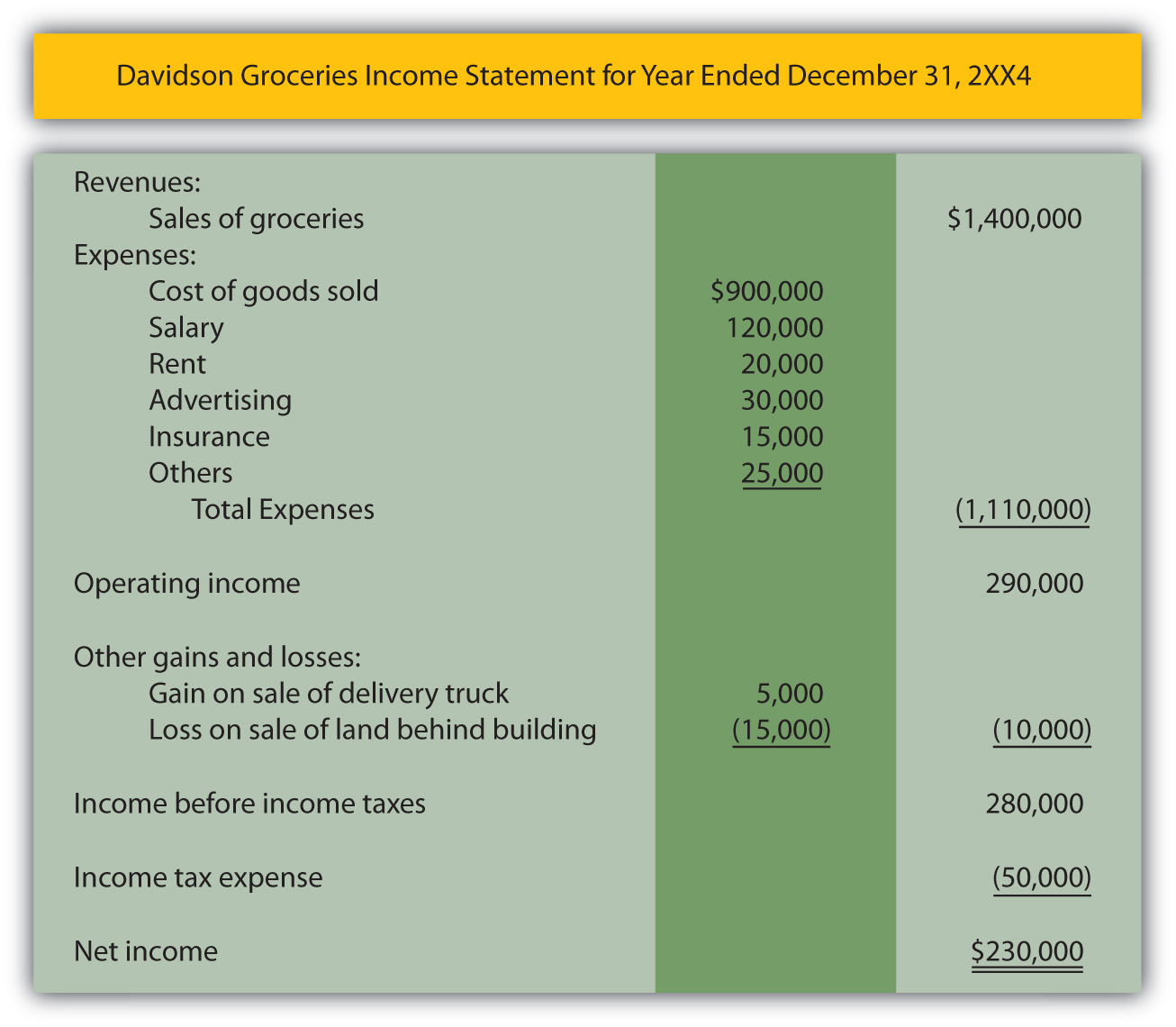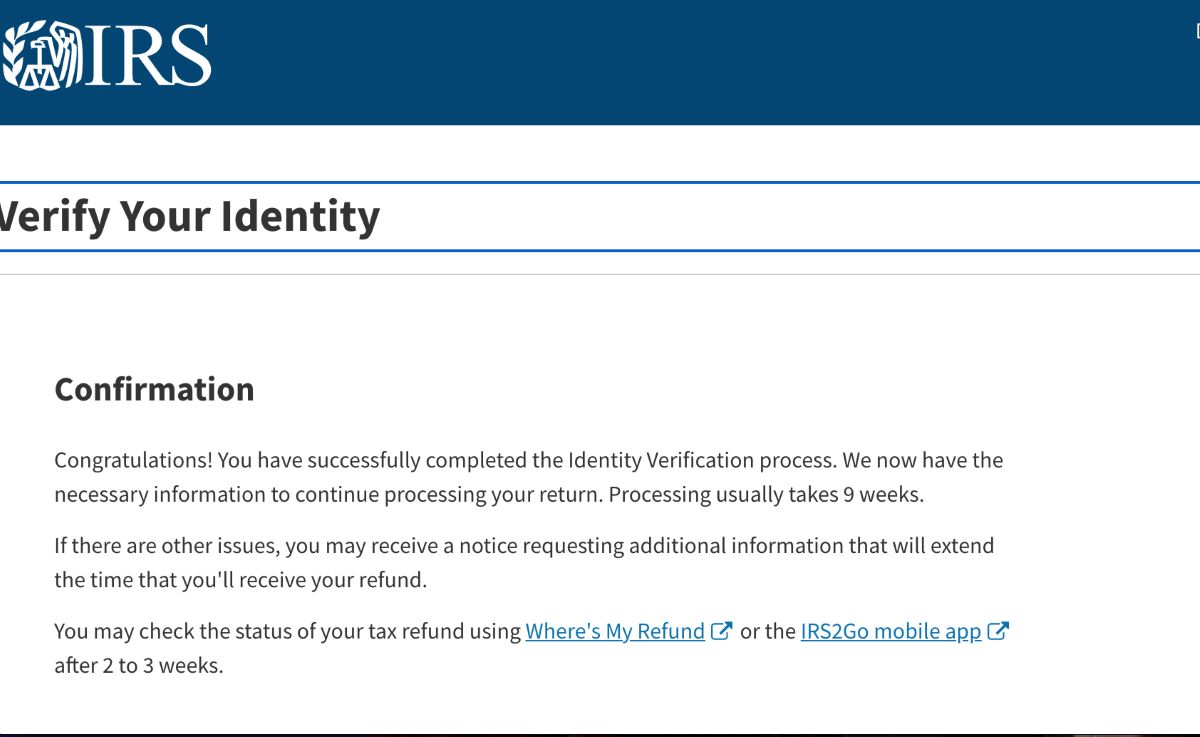Home>Finance>The Optimal Capital Structure Occurs When Operating Leverage Equals Financial Leverage.


Finance
The Optimal Capital Structure Occurs When Operating Leverage Equals Financial Leverage.
Modified: December 29, 2023
Achieve the ideal financial balance by aligning operating leverage and financial leverage in your capital structure. Enhance your finance strategy for optimal results.
(Many of the links in this article redirect to a specific reviewed product. Your purchase of these products through affiliate links helps to generate commission for LiveWell, at no extra cost. Learn more)
Table of Contents
Introduction
Welcome to the world of finance, where understanding the concept of capital structure is key to optimizing a company’s financial health. Capital structure refers to the mix of different sources of financing, such as equity and debt, that a company employs to fund its operations and investments.
Why is capital structure so crucial? Well, it not only affects a company’s ability to raise funds but also has a significant impact on its profitability and risk profile. A well-defined capital structure can lead to improved financial performance and shareholder value.
In this article, we will delve into the fascinating world of capital structure and explore the intricate relationship between two important components: operating leverage and financial leverage. Understanding this relationship is essential for determining the optimal capital structure.
Operating leverage refers to the degree to which fixed costs make up a company’s total costs. Companies with high fixed costs experience higher operating leverage, while those with low fixed costs have lower operating leverage. On the other hand, financial leverage involves the use of debt to finance a company’s operations. It represents the proportion of debt in the company’s capital structure.
More often than not, there is a significant link between operating leverage and financial leverage. The relationship between these two factors plays a crucial role in shaping a company’s optimal capital structure. The optimal capital structure occurs when operating leverage is in equilibrium with financial leverage.
Throughout this article, we will explore in detail the concepts of operating leverage and financial leverage. We will also analyze the relationship between the two and understand how they contribute to determining the optimal capital structure for a company. So, let’s dive in and unravel the mysteries of capital structure optimization!
Understanding Capital Structure
Before we can delve into the relationship between operating leverage and financial leverage, it’s essential to have a solid understanding of capital structure. In simple terms, capital structure refers to the mix of different sources of financing that a company uses to fund its operations and investments.
Typically, a company’s capital structure comprises two main components: equity and debt. Equity represents the ownership interest in the company and is issued in the form of common stock or preferred stock. On the other hand, debt includes borrowed funds that need to be repaid over a specified period, typically with interest.
The proportions of equity and debt in a company’s capital structure can significantly impact its financial health and performance. A well-balanced capital structure strikes the right balance between utilizing debt to increase returns and mitigating the risk associated with excessive debt.
Companies with a higher proportion of debt in their capital structure are considered to have a higher financial risk. This is because debt requires regular interest payments and the repayment of principal, which can strain a company’s cash flow if its financial performance weakens. On the other hand, companies with a higher proportion of equity financing tend to have a lower risk as equity investors bear the risk of financial losses.
An optimal capital structure is one that maximizes the value of the company, taking into account factors such as cost of capital, profitability, risk tolerance, and market conditions. It is a delicate balancing act that aims to find the right mix of debt and equity financing that aligns with the company’s objectives and provides the greatest value to shareholders.
However, determining the optimal capital structure is not a one-size-fits-all approach. It varies across industries, business models, and stages of a company’s lifecycle. For example, a high-growth startup may rely more on equity financing to fuel its expansion, while a mature company may use a combination of both debt and equity.
Now that we have a solid understanding of capital structure, let’s dive deeper into the concepts of operating leverage and financial leverage and explore how they contribute to shaping the optimal capital structure.
Operating Leverage
Operating leverage is a measure of how changes in revenue affect a company’s operating income or earnings before interest and taxes (EBIT). It reflects the degree to which fixed costs make up a company’s total costs. Companies with high fixed costs and low variable costs have higher operating leverage, while those with low fixed costs and high variable costs have lower operating leverage.
When a company has high operating leverage, it means that a small change in sales volume can lead to a proportionally larger change in operating income. This is because fixed costs remain unchanged regardless of the level of sales, while variable costs fluctuate with sales volume.
Let’s consider an example to illustrate this concept. Company A operates a manufacturing facility with high fixed costs, such as rent, depreciation, and salaries. The variable costs, such as raw materials and direct labor, are relatively low. On the other hand, Company B operates a service-based business with low fixed costs and high variable costs, such as salaries and commissions.
If Company A experiences an increase in sales, the fixed costs remain the same, but the additional revenue goes directly towards covering the variable costs. This leads to a significant increase in operating income and profitability. Conversely, if Company A experiences a decline in sales, the fixed costs still need to be paid, which can result in a substantial decrease in operating income.
In contrast, for Company B, a small change in sales volume will have a more limited impact on the operating income. This is because the variable costs are directly tied to the sales volume. If sales decrease, the variable costs would decrease proportionally, resulting in a lesser impact on the operating income.
The level of operating leverage can have both advantages and disadvantages for a company. On one hand, high operating leverage can magnify profitability during periods of strong sales growth. On the other hand, it can also amplify losses during downturns or periods of declining sales.
Understanding the operating leverage is crucial for making informed financial decisions. An analysis of a company’s operating leverage can help determine its risk profile, profitability potential, and the flexibility it has to adjust its cost structure in response to changes in sales volume.
Now that we have a good grasp of operating leverage, let’s move on to understanding financial leverage and the relationship it has with operating leverage in shaping the optimal capital structure.
Financial Leverage
Financial leverage is the use of debt or borrowed funds to finance a company’s operations and investments. It refers to the proportion of debt in a company’s capital structure. By taking on debt, a company can increase its potential returns on investment, as the cost of debt is typically lower than the cost of equity.
When a company uses debt financing, it is required to make regular interest payments and repay the principal amount within a specified period. The interest expense is tax-deductible, which further lowers the effective cost of debt. This allows companies to increase their earnings potential by using other people’s money to fund their activities.
Financial leverage can amplify the returns for shareholders, especially when a company generates a higher return on investment than the cost of borrowing. This can lead to an increase in shareholder value and higher profitability.
However, it is important to note that financial leverage also increases the level of risk for a company. The use of debt introduces an additional fixed financial obligation in the form of interest payments and principal repayment. If a company’s financial performance weakens or it faces challenges in generating sufficient cash flow, servicing the debt can become burdensome.
Furthermore, excessive debt can restrict a company’s financial flexibility and limit its ability to pursue growth opportunities or withstand economic downturns. Credit rating agencies closely monitor a company’s debt levels and financial health, and excessive debt can lead to a downgrade in credit ratings, which can increase borrowing costs and negatively impact investor confidence.
Companies need to strike a balance between utilizing financial leverage to enhance returns and managing the associated risks. A company’s optimal level of financial leverage is determined by factors such as its industry, growth prospects, cash flow stability, and risk tolerance.
Now that we have a clear understanding of operating leverage and financial leverage, let’s explore the relationship between these two components and how they contribute to determining the optimal capital structure for a company.
Relationship Between Operating Leverage and Financial Leverage
The relationship between operating leverage and financial leverage is an important aspect of determining the optimal capital structure for a company. Both types of leverage have a significant impact on a company’s profitability, risk profile, and ability to generate returns for its shareholders.
Operating leverage and financial leverage are interconnected because changes in a company’s sales volume directly affect its operating income, which, in turn, influences its ability to service its debt obligations.
A company with high operating leverage and low financial leverage relies heavily on fixed costs to generate profits. This means that a small increase in sales can lead to a significant increase in operating income. However, if sales decline, the fixed costs remain the same, which can result in a more substantial decrease in the operating income.
On the other hand, a company with low operating leverage and high financial leverage has lower fixed costs and higher variable costs. In this case, changes in sales volume have a more limited impact on operating income, but the company’s debt obligations remain constant. Thus, it is less affected by changes in sales volume but more affected by the cost of debt and interest payments.
The interaction between these two types of leverage influences a company’s risk profile. High operating leverage amplifies the impact of sales fluctuations on operating income, increasing the company’s financial risk. At the same time, high financial leverage poses additional risks due to the fixed obligations associated with debt servicing.
To achieve the optimal capital structure, companies need to balance the trade-off between risk and return. This requires evaluating the levels of operating leverage and financial leverage that align with the company’s risk tolerance, profitability targets, and desire for financial flexibility.
The optimal capital structure occurs when a company achieves an equilibrium between operating leverage and financial leverage. It is the point where the benefits of each type of leverage are maximized while keeping the associated risks in check.
It’s important for companies to assess the impact of changes in operating income on their ability to service debt obligations and maintain financial stability. A careful analysis of the relationship between operating leverage and financial leverage helps determine the appropriate mix of debt and equity financing that will optimize the company’s financial health and value creation potential.
Now that we understand the relationship between operating leverage and financial leverage, let’s explore the factors that influence the optimal capital structure for a company.
The Optimal Capital Structure
The optimal capital structure refers to the best mix of debt and equity financing that maximizes the value of a company. It is the point where the company achieves a balance between risk and return, taking into account factors such as cost of capital, profitability, risk tolerance, and market conditions.
There is no one-size-fits-all approach to determining the optimal capital structure, as it varies across industries, business models, and stages of a company’s lifecycle. However, there are some general considerations and guidelines that can help companies make informed decisions.
One of the key considerations in determining the optimal capital structure is the cost of capital. The cost of capital is the average rate of return that a company needs to earn on its investments to satisfy its investors’ expectations. It is influenced by both the cost of debt and the cost of equity.
Debt financing generally has a lower cost compared to equity financing due to the tax-deductible interest expenses. However, excessive debt can increase the company’s financial risk and borrowing costs. Companies need to evaluate the appropriate level of debt that allows them to benefit from the tax advantages while maintaining a healthy balance sheet.
Equity financing represents ownership in the company and does not require regular interest payments or principal repayment. However, it dilutes existing shareholders’ ownership and can be more expensive than debt financing due to the expected return on equity for investors.
Another factor to consider is the profitability of the company. Companies with strong and stable cash flows may be more inclined to take on debt as they have the ability to service their debt obligations consistently. On the other hand, companies with more volatile earnings may prefer a higher proportion of equity financing to reduce the risk associated with debt payments.
Risk tolerance is also an important consideration in determining the optimal capital structure. Different companies have varying levels of risk tolerance based on factors such as industry dynamics, market conditions, and management philosophy. Companies in highly regulated industries or those operating in uncertain environments may prefer a more conservative capital structure with a lower proportion of debt.
Market conditions and investor sentiment also play a role in determining the optimal capital structure. During periods of low interest rates and favorable credit conditions, companies may be more inclined to take on debt. Conversely, during economic downturns or periods of heightened uncertainty, companies may opt for a more conservative capital structure to protect their financial stability.
Ultimately, the optimal capital structure is a dynamic concept that evolves as the company’s needs and external factors change. It requires ongoing monitoring and adjustment to maintain the right balance between debt and equity financing that aligns with the company’s objectives and maximizes shareholder value.
Now that we have explored the concept of the optimal capital structure, let’s delve into the factors that influence its determination in more detail.
Factors Influencing the Optimal Capital Structure
Several factors come into play when determining the optimal capital structure for a company. These factors can vary depending on the industry, business model, and specific circumstances of the company. Let’s explore some of the key factors that influence the determination of the optimal capital structure.
1. Industry Characteristics: Different industries have unique capital structure requirements. For instance, capital-intensive industries such as manufacturing or infrastructure tend to have higher levels of debt financing due to the need for significant investment in fixed assets. On the other hand, knowledge-based or technology-driven industries may prefer equity financing to fuel research and development or growth initiatives.
2. Business Risk: The level of business risk associated with a company’s operations influences the optimal capital structure. Companies operating in stable industries with predictable cash flows may be more comfortable taking on debt to leverage their operations. Conversely, companies in volatile or cyclical industries may favor a more conservative capital structure to minimize financial risk.
3. Growth Prospects: Companies with high growth prospects often require additional capital to fund expansion initiatives. These companies may choose to raise equity financing to support their growth plans and avoid the burden of excessive debt. However, the optimal capital structure should strike a balance between leveraging growth opportunities and maintaining financial stability.
4. Cash Flow Stability: The stability and predictability of a company’s cash flows influence the level of debt it can comfortably support. Companies with steady and consistent cash flows are typically better suited to handle debt payments, making them more inclined to have higher financial leverage. Conversely, companies with fluctuating or uncertain cash flows may opt for lower financial leverage to mitigate the risk of debt default.
5. Market Conditions: Economic conditions, interest rates, and investor sentiment can impact the cost and availability of financing options. During periods of low interest rates and favorable credit conditions, companies may be more inclined to take on debt. However, during economic downturns or tightened credit markets, companies may opt for conservative capital structures to ensure financial stability.
6. Tax Considerations: The tax environment of a company’s operating jurisdiction plays a role in determining the optimal capital structure. Interest expenses on debt are often tax-deductible, which can provide a tax shield for companies. As a result, companies may choose to take on debt to reduce their tax burden and increase after-tax profitability.
7. Management Philosophy: The risk appetite and strategic preferences of company management also influence capital structure decisions. Some management teams may have a conservative approach, prioritizing financial stability and a low level of financial risk. Others may be more aggressive, aiming to maximize returns for shareholders through higher leverage and potential higher earnings.
It’s important to note that these factors do not exist in isolation and should be evaluated holistically. Finding the optimal capital structure requires a comprehensive analysis of a company’s unique circumstances and objectives. Regular monitoring and adjustment of the capital structure may be necessary to adapt to evolving market conditions, industry dynamics, and the company’s changing financial needs.
Now that we have explored the factors influencing the optimal capital structure, let’s wrap up our discussion.
Conclusion
Understanding the concept of capital structure and its optimization is vital for companies seeking to enhance their financial health and maximize shareholder value. The optimal capital structure involves finding the right balance between equity and debt financing that aligns with a company’s objectives, risk tolerance, and market conditions.
Operating leverage and financial leverage are two key components that influence the determination of the optimal capital structure. Operating leverage reflects the impact of fixed costs on a company’s operating income, while financial leverage represents the use of debt to finance operations. The relationship between these two leverages plays a crucial role in shaping the optimal capital structure.
Several factors impact the determination of the optimal capital structure. Industry characteristics, business risk, growth prospects, cash flow stability, market conditions, tax considerations, and management philosophies all play a role in shaping the ideal mix of debt and equity financing.
Companies must evaluate these factors holistically and strike a balance between risk and return. While debt financing can amplify returns, excessive leverage can increase financial risk and limit financial flexibility. Equity financing provides ownership dilution but offers more flexibility and reduces the risk of default.
The optimal capital structure is a dynamic concept that evolves as a company’s circumstances change. Companies must regularly assess their capital structure, monitor market conditions, and adjust accordingly to maintain a healthy balance between debt and equity financing.
Ultimately, finding the optimal capital structure requires a thorough understanding of a company’s financial needs, risk appetite, and growth objectives. By carefully considering the factors influencing the capital structure and making informed decisions, companies can position themselves strategically for long-term success and create value for their shareholders.
So, whether you’re a startup, a mature company, or anything in between, remember that optimizing your capital structure can have a significant impact on your financial performance and stability. Take the time to assess your unique circumstances, consider the factors at play, and make the decisions that will lead to the optimal capital structure for your organization.














